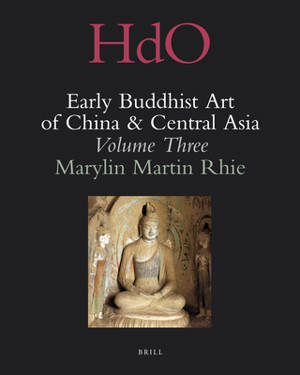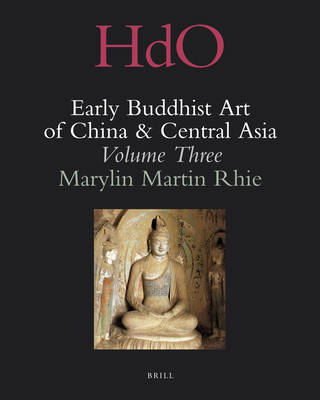
- Afhalen na 1 uur in een winkel met voorraad
- Gratis thuislevering in België vanaf € 30
- Ruim aanbod met 7 miljoen producten
- Afhalen na 1 uur in een winkel met voorraad
- Gratis thuislevering in België vanaf € 30
- Ruim aanbod met 7 miljoen producten
Zoeken
Early Buddhist Art of China and Central Asia, Volume 3
The Western Ch'in in Kansu in the Sixteen Kingdoms Period and Inter-Relationships with the Buddhist Art of Gandhāra
Marylin Martin Rhie
€ 586,45
+ 1172 punten
Omschrijving
This book, third in a series on the early Buddhist art of China and Central Asia, centers on Buddhist art from the Western Ch'in (385-431 A.D.) in eastern Kansu (northwest China), primarily from the cave temples of Ping-ling ssu and Mai-chi shan. A detailed chronological and iconographic study of sculptures and wall paintings in Cave 169 at Ping-ling ssu particularly yields a chronological framework for unlocking the difficult issues of dating early fifth century Chinese Buddhist art, and offers some new insights into textual sources in the Lotus, Hua-yen and Amitabha sutras. Further, this study introduces the iconographpy of the five Buddhas and its relation to the art of Gandhara and the famous five colossal T'an-yao caves at Yün-kang.
Specificaties
Betrokkenen
- Auteur(s):
- Uitgeverij:
Inhoud
- Aantal bladzijden:
- 1020
- Taal:
- Engels
- Reeks:
- Reeksnummer:
- nr. 12
Eigenschappen
- Productcode (EAN):
- 9789004184008
- Verschijningsdatum:
- 14/06/2010
- Uitvoering:
- Hardcover
- Formaat:
- Genaaid
- Afmetingen:
- 203 mm x 241 mm
- Gewicht:
- 2517 g

Alleen bij Standaard Boekhandel
+ 1172 punten op je klantenkaart van Standaard Boekhandel
Beoordelingen
We publiceren alleen reviews die voldoen aan de voorwaarden voor reviews. Bekijk onze voorwaarden voor reviews.








